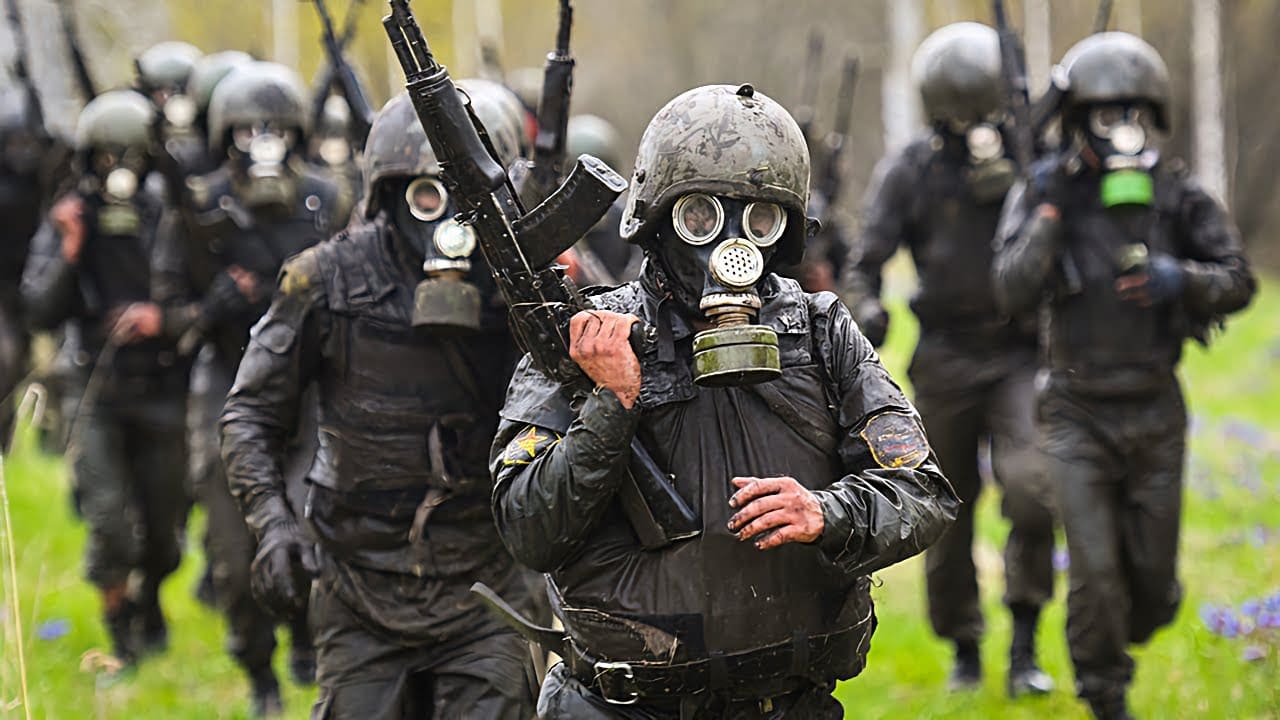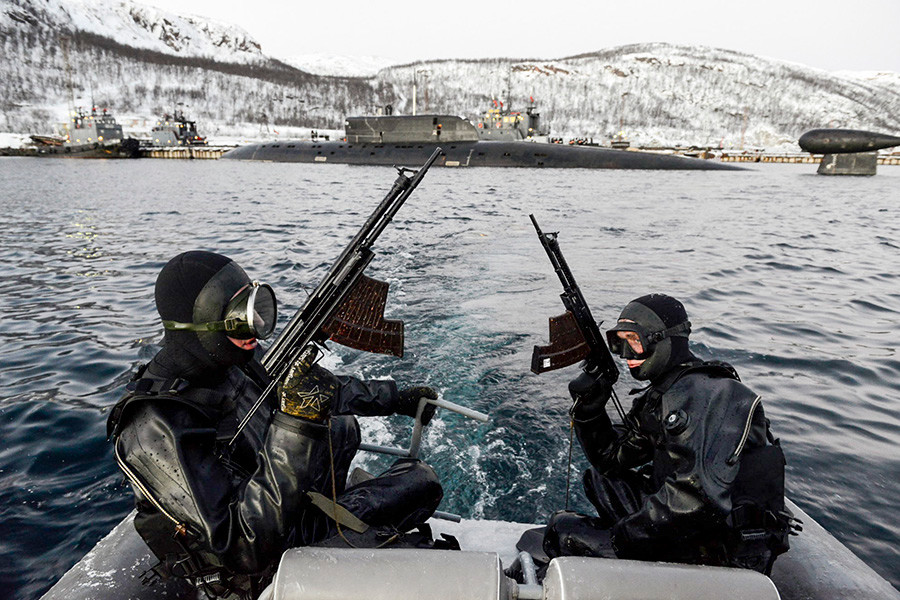Spetsnaz: Why Russian Special Forces Are Some Of The Best Soldiers In The World

A Russian invasion will certainly involve Russian special forces, Spetsnaz: The intense situation around Ukraine shows few signs of easing. Negotiations are taking place at the UN from Monday and official responses are being exchanged back and forth.
But with more than 127,000 Russian troops surrounding Ukraine on three sides, the prospects for a peaceful settlement seem, at least for now, bleak.
If the Russians invade Ukraine again, it can be assumed that the elite Spetsnaz will once again play an important role, like when the Russians annexed Crimea and sponsored an insurrection in the Donbas.
The Russian Spetsnaz: who are they?
The Spetsnaz is not a single elite unit, but consists of several different units, both in the military forces and in the police forces. Some of the best trained troops in Russia come from Spetsnaz, or special purpose units.
Spetsnaz units and missions are very similar to those of the US Army's 75th Ranger Regiment.
They specialize in reconnaissance, counter-insurgency and political operations. Spetsnaz integrate conventional military operations with covert "active measures". Typical missions can be deep penetrations to blow up bridges, seize airfields, wage electronic warfare, assassinate key officers, or attack radars and command and control centers.
Spetsnaz units were created after World War II. The GRU (Main Intelligence Directorate of the Armed Forces) underwent a reorganization in which independent special purpose reconnaissance companies were formed in 1949. These became battalions in 1957 and then brigades numbering on average between 1,000 and 1,300 men in 1962. The Spetsnaz would currently number 15,000.
Two separate Spetsnaz-type brigades were created for general warfare, army and navy. Spetsnaz units assigned to the newly formed Russian Special Operations Command (KSSO) perform a role similar to that of the US Army's Delta Force.
Missions in Crimea and Eastern Ukraine:
When Russia decided to annex Crimea in 2014, Spetsnaz units played a major role. It is important to take an interest in them because they will probably be used in a similar role if the conflict ignites again in Ukraine.
When the situation started between Russia and Ukraine on February 22, 2014, the Russians mobilized Spetsnaz battalions and airborne units and moved them near the straits that separate Ukraine from Russia. The GRU sent several hundred members of the 45th Spetsnaz Regiment to create a "popular uprising" whose purpose was to facilitate Russia's annexation plans.
On the 25th, a Russian amphibious ship landed 200 KSSO special operations forces in Sevastopol. On February 27, 50 Spetsnaz soldiers posing as a local "self-defense militia" seized the Crimean Parliament and hoisted a Russian flag over the building.
Ukrainian war correspondent Inna Zolotukhina wrote in her book (The War from Its Early Days), that the forces occupying the SBU headquarters in the eastern Ukrainian city of Sloviansk in late April 2014, " were dressed and equipped exactly like the fighters of Ramzan Kadyrov's Vostok battalion that I had seen in Crimea two months earlier."
They were the famous "little green men" who wore uniforms without identification patches, were equipped with body armor and night vision devices and were armed with sniper rifles, machine guns and heavy rocket-propelled grenades. rocket.
They managed to use their best trained and professional forces and suffered very few casualties mounting operations to envelop numerically superior forces. Learning the painful lessons of Chechnya and Georgia, Russian troops have been nicknamed "polite people".
During another invasion of Ukraine, Spetsnaz troops would be used as deep reconnaissance to scout targets for Russian airstrikes and artillery. They would also be used to assassinate targeted members of the Ukrainian military and government. They are a formidable enemy.

Spetsnaz missions and functions
Originally, an Army Spetsnaz unit consisted of a staff group, four parachute battalions, a communications company and logistics personnel.
Their primary missions were to conduct deep penetration operations behind enemy lines against high-value targets, such as US mobile tactical nuclear missiles based in Western Europe during the Cold War.
Secondary missions included raids, kidnapping of prisoners, sabotage, assassinations and guerrilla warfare.
The Navy Spetsnaz, which trained in maritime warfare, included a staff group, three battalions of combat swimmers and a battalion of paratroopers. Midget submarines were also assigned to the brigade.
Army and navy units were designed to operate in small eight-man detachments. However, they were also trained to work together as a much larger force on short notice, depending on the mission.
Targeted killings
Both the Army GRU and the Navy Spetsnaz had a brigade-level anti-VIP company of about 80 men whose primary mission was to assassinate military and political leaders. This ability has been used many times.
Spetsnaz units hid among regular units wearing identical uniforms, with GRU teams sporting the VDV (airborne) blue beret as well as its camouflage and street clothes. It was a common practice to conceal identities and movements as well as assigned numbers in each department.
The number of Spetsnaz peaked in the 1980s, when over 30,000 men in 20 army and navy brigades served, along with dozens of independent companies, mostly in Warsaw Pact states. . With the emergence of terror as a weapon in the early 1970s, more specialized Spetsnaz units were created within other parts of the Soviet government.
Alpha Group
The "Alpha" Group was established in 1974 as a 30-man counter-terrorism (CT) unit, operationally controlled by the KGB (now FSB). The Alpha Group now numbers about 700 men. Like Western counter-terrorism forces, its men train to storm ships, buildings, planes and buses.
Vympel Group
In 1981, the group "Vympel" was created. It was operationally controlled by the KGB. Vympel troops are the best-trained of all Spetsnaz units, with each man specializing in different areas, such as piloting, medicine, driving various armored vehicles, martial arts, snipers, and mastery of weapons. LANGUAGES.
With an estimated strength of around 1,000 men, these men carry out covert operations, in addition to providing a quick reaction force stationed to protect nuclear power plants in Russia.
Unlike GRU Spetsnaz, Alpha and Vympel units wear maroon berets and often black combat uniforms, unless they are serving with other units, in which case they wear similar outfits.
The MVD (Russian Interior Ministry) created a Spetsnaz unit from a rapid response team, anti-drug teams and prison guards. These Spetsnaz troops act as a sort of SWAT team, specializing in domestic counterinsurgency, counterterrorism, and border security. They constitute some 25 units. These men wear red berets in addition to departmental town and camouflage uniforms.
Selection, evaluation and training of Spetsnaz troops:
Selection requirements vary between GRU and Navy Spetsnaz.
Spetsnaz training includes, but is not limited to, the following:
- Extreme mental/physical conditioning
- Forced marches
- Weapons training
- precision shooting
- Long range precision shooting
- Explosives/Demolition Training
- Mountaineering (alpine rope techniques)
- Abseiling
- Airborne training
- counter-terrorism
- Hand-to-hand combat (use of tools such as the bayonet and the famous Spetsnaz shovel)
- Dive
- Underwater combat
- Emergency medical care training
Each class has around 150-170 candidates and the attrition rate is around 90-95%. Yet those who graduate have access to the best weapons and equipment Russia can provide, as well as the best training. A common saying among the Spetsnaz is: "You make a man a weapon".
Volunteers for Alpha or Vympel units must already be Spetsnaz qualified and undergo additional specialist training. Although confidential, this training consists of daily nine-kilometre runs in the morning, followed by forced marches of 65 to 70 kilometers with combat loads of almost 40 kg in freezing weather and with little or no water.
Two months of basic training and three to four years of advanced training are required before being allowed to join either group.
The MVD training course dispenses with some of the military areas but remains intense. It includes 100-meter sprints, a 12-kilometer cross-country run in full combat gear, urban assault drills with wall climbing, acrobatic drills, and a 12-minute freestyle sparring with three different opponents. The courses take place twice a year and it is known that less than 10% of the candidates pass them.

Other Notable Spetsnaz Operations
Syrian Civil War
Spetsnaz operators were active in Syria even before the official Russian intervention in September 2015. Army Spetsnaz units secured the Hmeimim air base in Latakia and the naval installation in Tartus and provided reconnaissance in targeting air strikes.
According to the Small Wars Journal, the Russians also deployed GRU Spetsnaz. At the height of the deployment, there was a battalion of 230-250 men, probably drawn from several units, including Navy Spetsnaz from the 431st Naval Reconnaissance Brigade.
There was also a team of operators from the newly formed Special Operations Command (KSSO), mainly snipers (or rather counter-snipers) and reconnaissance troops.
National Guard soldier dies in Alaska
The Navy Spetsnaz also carried out their own clandestine actions. Rumor has it that they conducted operations in remote areas of Alaska and neighboring islands.
The suspicious death of an Alaska National Guardsman in the 1980s allegedly occurred when he ran into a Spetsnaz unit dispatched from a mini-submarine on Little Diomede Island. A piece of Soviet-made equipment was found near his body, and although this has never been confirmed or denied by the US government.
Joint Spetsnaz/American Green Beret mission
During fighting in Kosovo and the Balkans in 2001, Russian Spetsnaz and US Green Berets conducted a joint operation against a group called the Liberation Army of Presevo, Medveda and Bujanovac (UCPMB).
Yet such joint operations seem to be a thing of the past as relations between the United States and Russia deteriorate.
2 comments
-
Pierre on
Article dépassé aujourd’hui suite au fiasco en Ukraine
merci pour ce cour d’histoire des force spetsnaz et continuer comme ça les gars